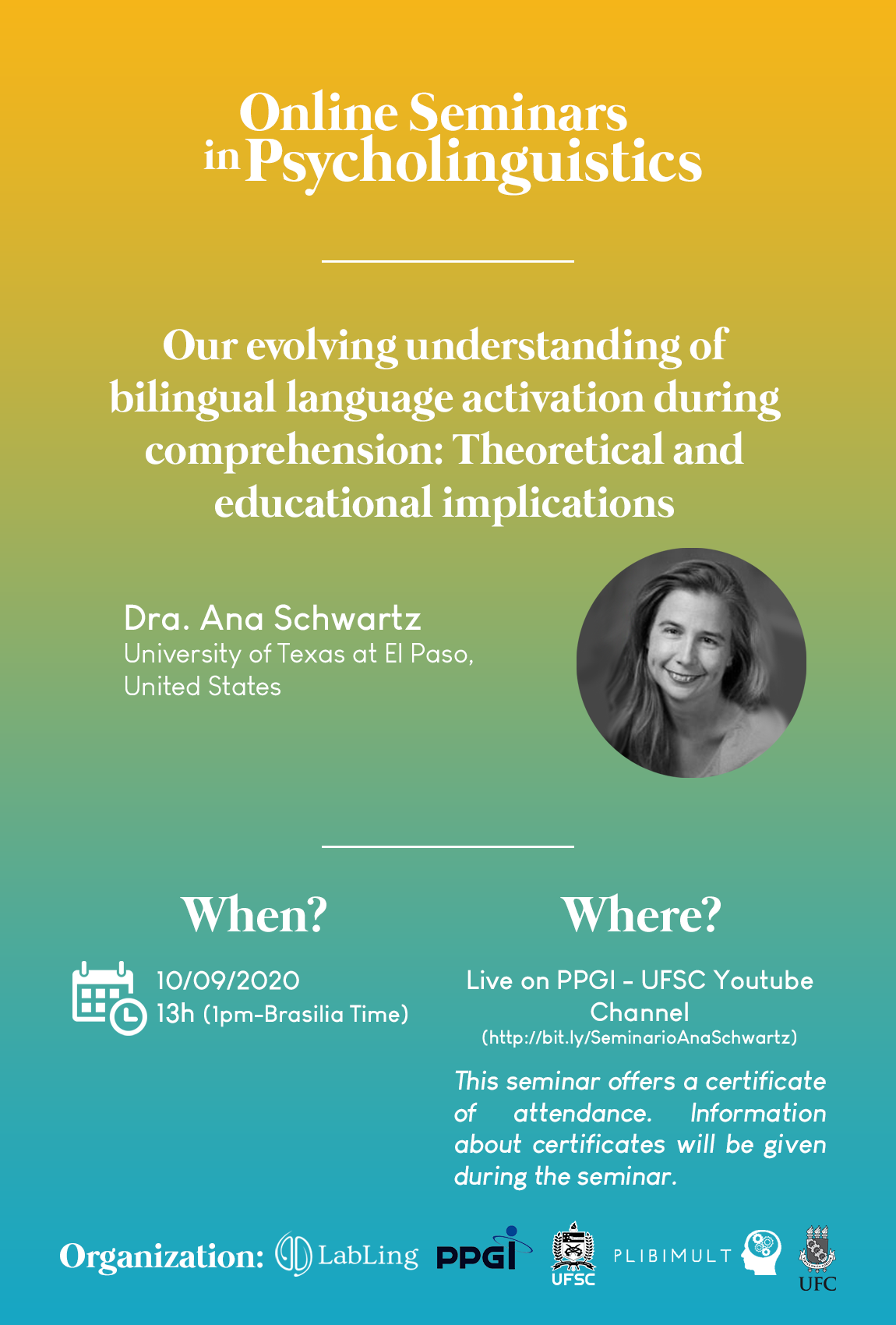10º Online Seminars in Psycholinguistics
🕤 Thursday, September 10, 1 pm (Brasilia time)
Live on http://bit.ly/SeminarioAnaSchwartz
Our evolving understanding of bilingual language activation during comprehension: Theoretical and educational implications
Ana Schwartz (University of Texas at El Paso)
There is now an abundant literature demonstrating that when bilinguals are communicating in one of their languages, information across both of their languages becomes activated. This has been observed in all modalities, including speech production and perception. However, the effects of cross-language activation have been most consistently observed in reading. An entire generation of studies in the 1990s showed that word recognition performance is influenced by cross-language overlap in word form. For example, the processing of cognates (translations with identical or highly similar form such as blouse/blusa in English and Spanish) is facilitated relative to noncognate controls. This research led to the formulation of what is now the most prominent model of bilingual lexical access, the Bilingual Interactive Activation Plus (BIA+) (Dijkstra &Van Heuven, 2002) model. According to this model the initial stages of lexical access are based on stimulus driven, bottom-up activation that spreads across languages. What words become activated is based solely on their overlap with the stimulus input, and not their language membership. The key implication is that during comprehension a language is never truly selected and that factors such as the surrounding context or expectations do not influence the relative activation of a particular language. However, the early research supporting the BIA+ was based almost exclusively on single word processing. There is emerging evidence from studies that have used sentence and discourse contexts that the surrounding context does in fact allow for one language to be more accessible than the other. In this talk I will review studies from our laboratory that have unveiled the ways in which a meaningful context, in which words must be integrated into a larger discourse, allows for activation to “zoom in” on the target language. This work has also revealed that bilinguals recruit general cognitive control mechanisms when they process language-mixed (code-switched) sentences. Implications will be drawn not only for potential revisions of the BIA+ but also for how, as a society particularly in the US education system, we do not appreciate the fact that reading for bi(multi)-linguals is fundamentally different than that of monolinguals.
Bio
Ana Schwartz is an associate professor in the Department of Psychology at the University of Texas at El Paso (UTEP). She received a Masters’ in Educational Psychology in 2001, under the mentorship of Dr. Robert Stevens, and her PhD in cognitive psychology under the mentorship of Dr. Judith Kroll, in 2003, from Penn State University. In 2004 she completed post-doctoral work on bilingual speech processing under the supervision of Dr. David Pisoni. By the end of that same year she started her appointment at UTEP. Her research examines the cognitive nature of bilingual comprehension processes. In this way she has had opportunities to investigate the complex dynamics of bilingual language processing across modalities and across school age children and adults. She carries out her research through eye-tracking, “button-press” reaction time paradigms, as well as more naturalistic reading and recall paradigms. Her earlier work focused on processes of lexical access and how these are influenced by cross-language interactions. More recently she has turned her attention to discourse processing and a deeper understanding of what it means for a language to be “selected” or “inhibited”. Although most of her research has used laboratory settings, the findings have critical implications for pedagogy and reading education.








